Oof, we are coming out of the holidays, and there is a lot of sickness out there. Here is your state of affairs.
Influenza-like illnesses: Very high
The climate of respiratory health in the United States (coined “influenza-like illnesses” by CDC) is very high. Over the holidays, exponential growth finally kicked into gear. Today, about 1 of 14 visits to the doctor are for fever, cough, or sore throat. This may be peaking soon, but we often see two or three humps thereafter.

Flu accounts for most of the symptom burden, as indicated by emergency department visits and test positivity rates.

However, Covid-19 continues to take the lead for severe disease as indicated by hospitalizations and deaths. (Note: I roughly drew in RSV rates below, as CDC continues to keep these data separate.)
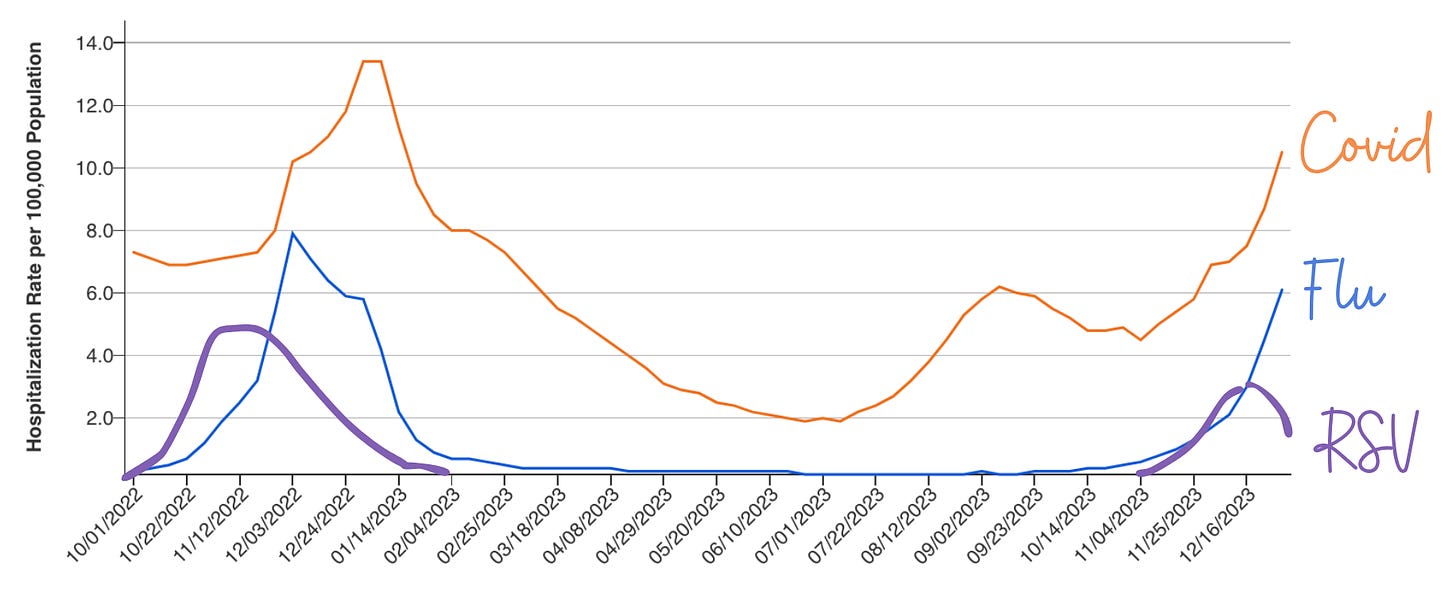
The vaccination disparity is still staggering, with Covid-19 vaccine coverage less than half that of the flu. Even more concerning: only 1 in 3 nursing home residents are up-to-date on Covid-19 vaccines, which is just unacceptable at this point.
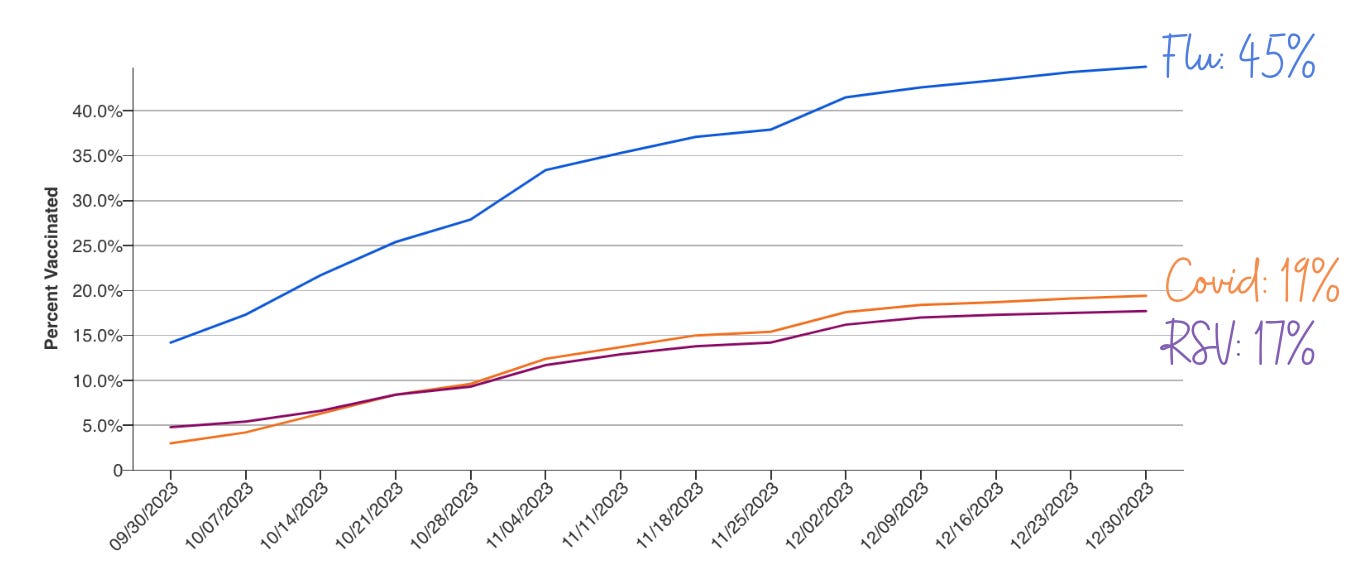
Here is your deeper dive into the “big three.”
Covid-19: High and increasing
Wastewater levels—one of the earliest indicators of community transmission—are “very high.” Levels today are 27% higher than last winter and have yet to slow down. This is, in part, thanks to the JN.1 subvariant taking dominance quickly.
It’s incredibly difficult to predict peaks, but some models predict Covid-19 transmission will peak in the next two weeks. Many European countries have already peaked.
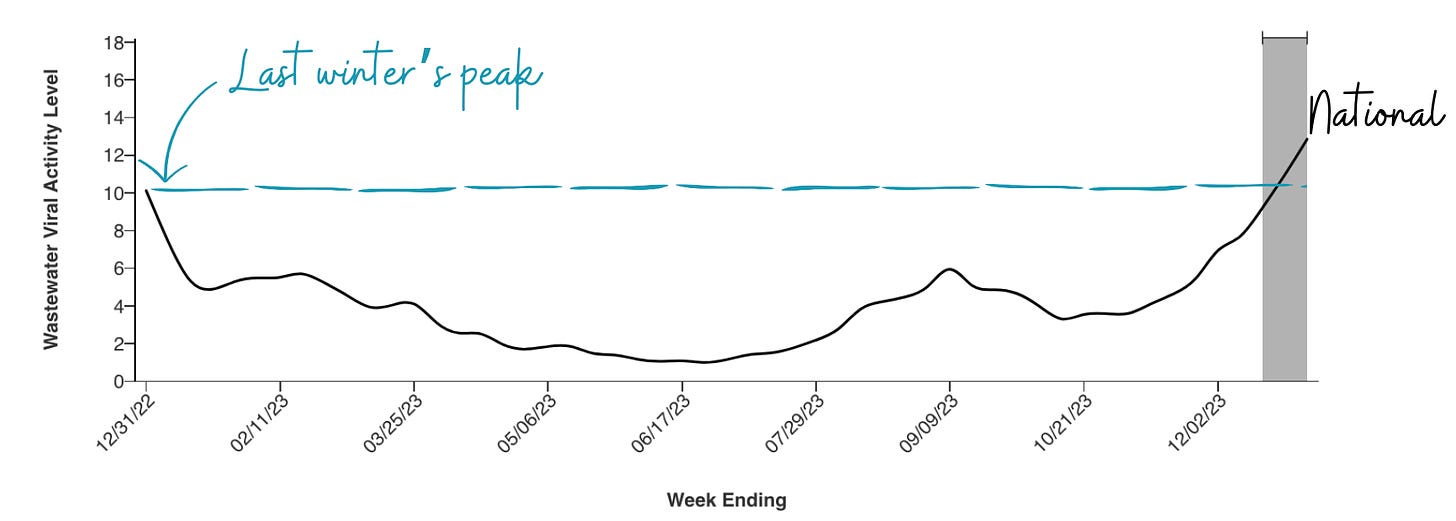
According to wastewater dashboards, this is the second-highest Covid-19 wave ever, behind only the original Omicron tsunami. A few pieces of nuance are needed, though:
We don’t know the number of cases. This is a known limitation of wastewater: There is no consensus on a direct comparison between wastewater SARS-CoV-2 concentration and clinical case numbers.
We don’t know if wastewater is comparable over time. The virus has substantially changed, including viral load. Also, wastewater surveillance coverage has significantly increased (almost none in March 2020 to more than 1,400 sites now). Wastewater is probably comparable throughout the Omicron era. However, are levels today comparable with Delta, or Alpha, or the original Wuhan strain? We don’t know.
Infections and severe disease keep diverging thanks to our immunity wall. Hospitalizations are also increasing but now 22% lower than last winter, undoubtedly helping stressed healthcare systems.
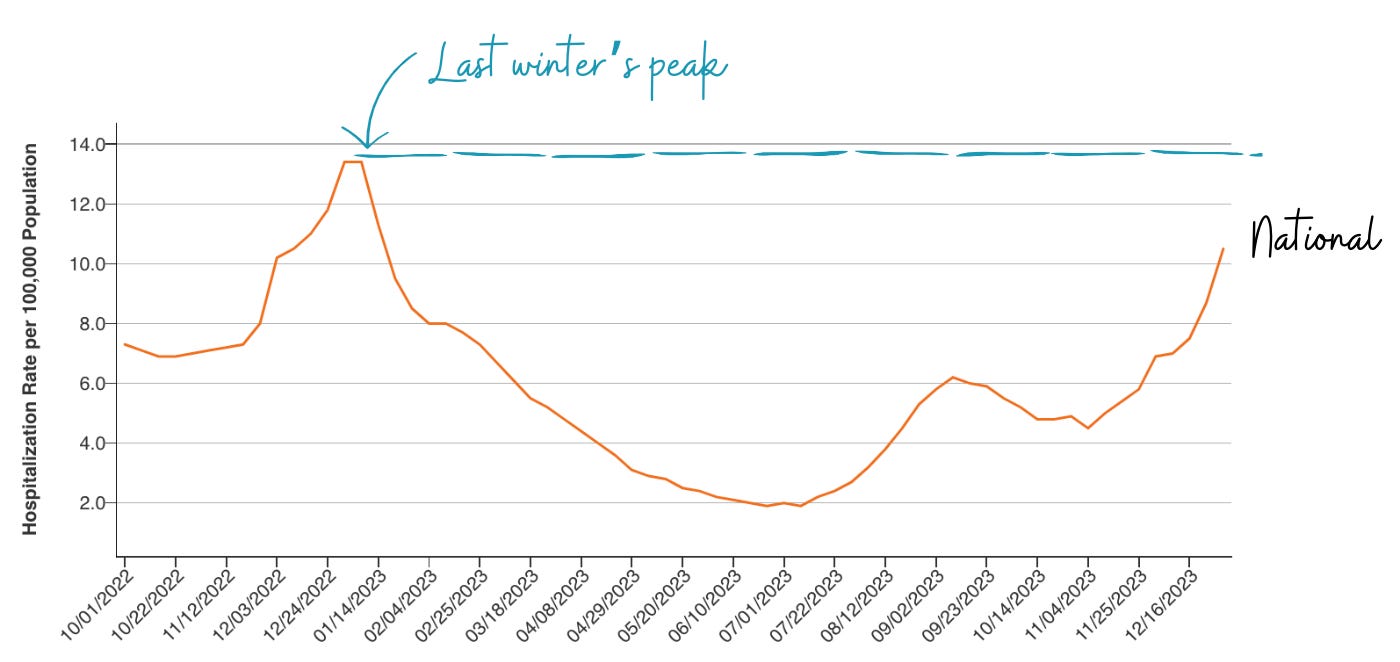
Hospitalizations are still driven by those over 60 years old and those not up-to-date with vaccinations.
Is the reduction in hospitalizations (compared to wastewater) due to a change in reporting? Maybe a little, but not enough to account for the big difference:
There was no change in hospital reporting at the end of the emergency. This is supposed to end in April 2024, but I’m crossing my fingers that reporting will continue.
Routine admission testing has changed, but only slightly since last year. The most change had already occurred by last winter. This means last winter (and this winter) are likely “good enough” to compare.
Flu: High but slowing down
Flu exploded during the holidays but seems to be slowing down, as shown in the positive tests below.
About 20,000 people (22 per 100,000) were hospitalized for flu last week. This is about on track for a “typical” flu season, thanks to our flu vaccines being a good match this year.
RSV: Declining
RSV is still around, but activity is declining. Hospitalizations lag cases, but pediatric severe diseases have peaked, and adults should follow soon. If trends continue, this year will be less severe than last, thanks to RSV immunity lasting a few years.

Other things to pay attention to
A measles outbreak in Philadelphia. In addition to the index case, 5 locally acquired cases have been identified. Of those, 4 were hospitalized. All were unvaccinated.
Norovirus (think vomiting and diarrhea) continues to go up and up. Wash those hands.
Missing work because of sickness remains higher than in pre-pandemic times, but not as high as we saw throughout the emergency.
Bottom line
There are a lot of sick people out there. Other than Covid-19 infections, this winter seems to largely mirror last year. Is this our new normal? Probably, which is bad news for hospitals, parents’ sanity, and overall quality of life during winter.
It’s not too late to get vaccinated—even if things start to peak, we are only halfway through the journey. I continue to wear that mask in crowded indoor areas; it will help.
Love, YLE
“Your Local Epidemiologist (YLE)” is written by Dr. Katelyn Jetelina, M.P.H. Ph.D.—an epidemiologist, wife, and mom of two little girls. During the day, she is a senior scientific consultant to several organizations. At night, she writes this newsletter. Her main goal is to “translate” the ever-evolving public health world so that people will be well-equipped to make evidence-based decisions. This newsletter is free, thanks to the generous support of fellow YLE community members. To support this effort, subscribe below:






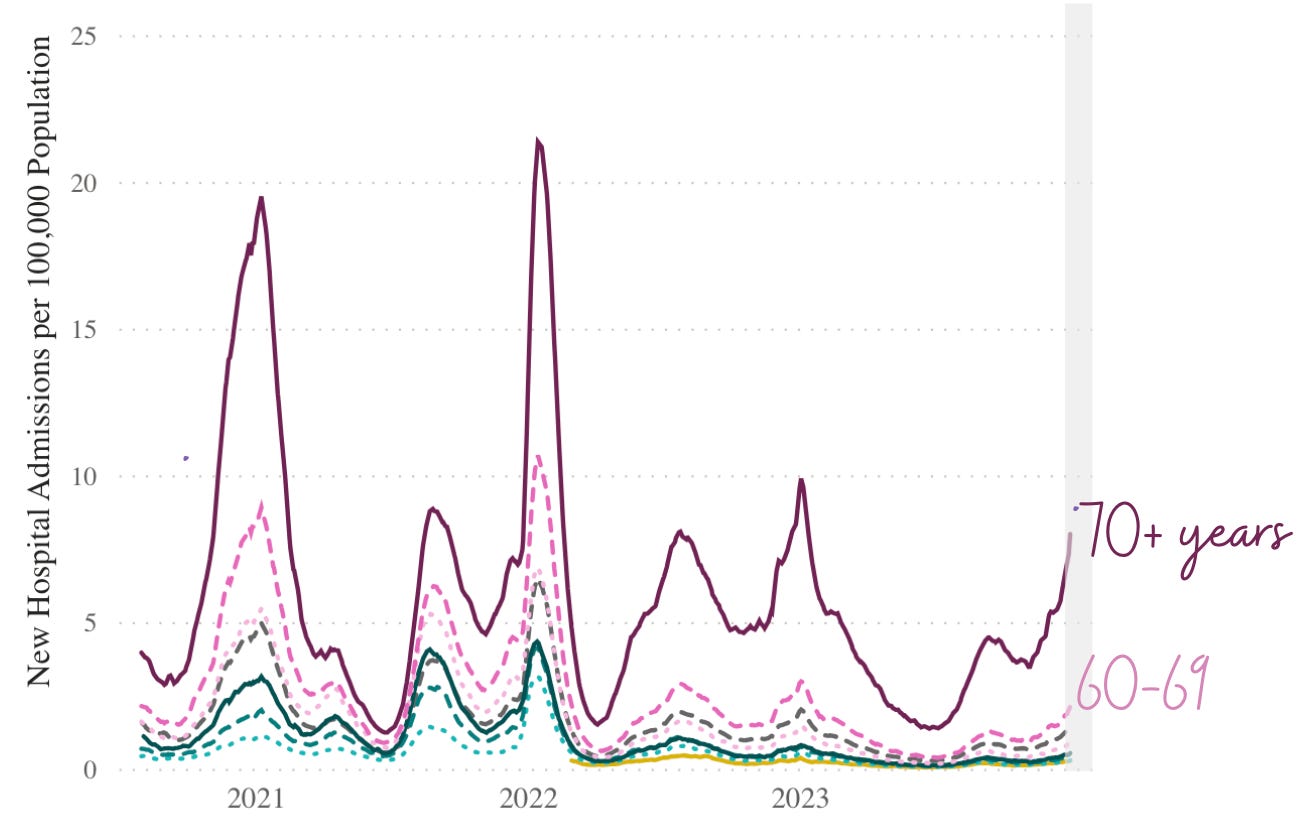

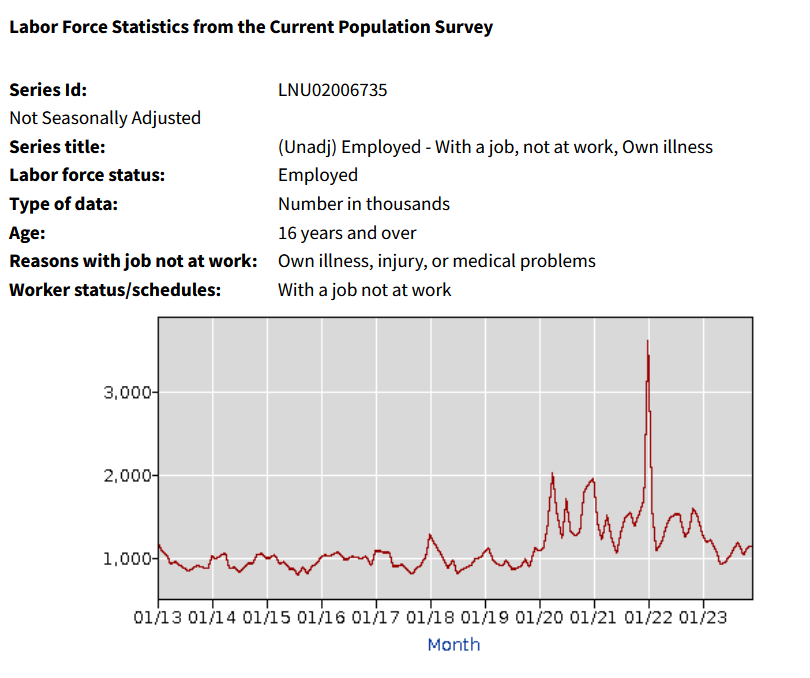
Thank you for a great update. Question about covid wastewater levels being "very high" and "27% higher than last winter and yet to slow down."
I know a lot of people with "colds" right now - sore throats, congestion, fatigue, sometimes coughs and fever. They keep testing for covid but their tests remain negative. Are the covid at home tests still working with the newer variants?
The Philadelphia measles outbreak has been made worse by a parent and daycare who ignored isolate and quarantine instructions from the health department.